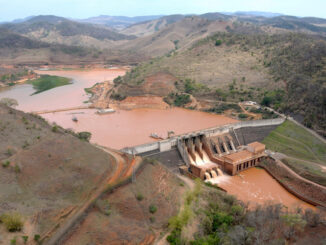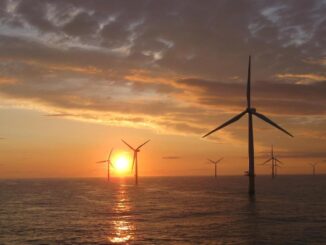
ENB Pub Note: We need to examine the amount of oil Brazil produces and exports. The following article from Americas Offshore points out that Petrobras has a large-scale tender to charter up to 18 platform supply vessels.
-
2023 Production: Brazil produced approximately 3.5 million barrels per day (bpd) of crude oil and condensates, marking a 12.4% increase from 2022.
-
2024 Estimate: According to Brazil’s National Agency of Petroleum, Natural Gas, and Biofuels (ANP), production averaged 3.69 million bpd from January to November 2024, with 71.5% (rising to 80.3% in the second half) coming from pre-salt fields.
-
Key Producer: Petrobras, the state-owned company, accounted for over 90% of national output in 2023 and 98% in November 2024.
-
Regional Breakdown: Rio de Janeiro led production in 2023, contributing over 85% (nearly 1.06 billion barrels), followed by São Paulo with 90.61 million barrels. Most production is offshore.
-
2023 Export Volume: Brazil exported approximately 81.4 million metric tons of crude oil, the highest in over a decade.
-
2023 Export Value: Crude oil exports were valued at $42.6 billion USD.
-
2024 Export Trends: Crude oil became Brazil’s top export in 2024, surpassing soybeans, with foreign oil sales totaling nearly $45 billion USD. China was the primary buyer, accounting for over 46% of exports, followed by the United States (11%).
-
Export Share: In 2024, Brazil exported 52.1% of its produced oil, with much of it refined abroad and some re-imported as fuel.
-
Export Price (May 2024): The average export price was $0.51 per kilogram, up from $0.49 in April 2024.
-
Reserves: As of 2016, Brazil held 16.18 billion barrels of proven oil reserves, ranking 15th globally. By 2022, estimates suggested 13.24 billion barrels, second in South America after Venezuela.
-
Consumption: Brazil consumed about 2.57 million bpd in 2023, meaning a significant portion of production is available for export.
-
Future Outlook: By 2030, Brazil is projected to become the world’s fifth-largest crude oil exporter, with production potentially reaching 4.9 million bpd by 2032, driven by pre-salt fields.
-
The data reflects a mix of crude oil, condensates, and natural gas liquids (NGLs), excluding biofuels and non-liquid fuels.
-
Brazil’s reliance on exports is partly due to limited domestic refining capacity (2.3 million bpd), leading to imports of refined products like gasoline.
-
Posts on X mentioning Brazil as the largest oil exporter are inaccurate; Saudi Arabia remains the leader.
Brazilian state-owned oil and gas giant Petrobras has launched a large-scale tender to charter up to 18 platform supply vessels.
The selection process will be in line with Petrobras’ usual closed-bid model, with the lowest price as the primary selection criteria, followed by an evaluation of each vessel’s technical specifications. The deadline for proposal submissions is May 19.
The tender is for up to five general cargo PSVs, eight multipurpose or fluid carrier PSVs, two hybrid PSVs, and three multipurpose or fluid carrier PSVs on separate commencement dates. Deals for the vessels will have a duration of four years. All platform suppliers must have a deadweight of either 3,000 or 4,500 tonnes.
The first lot will start work in January 2026 or within 180 days after contract signing, while the second and third lot will begin their contracts in May 2026 or within 240 days after contract signing. The final lot is set to kick off their contracts in September 2026 or within 305 days after contract signing.
Petrobras currently has three other ongoing PSV tenders, which could bring the total to 26 new vessels contracted in the coming months.
According to Rio de Janeiro-based offshore brokerage WSB Advisors, this is the first time since 2023 that Petrobras has launched such a big tender. In 2023, the company launched tenders for 20 and 21 vessels.
Earlier this month, Splash reported that the Brazilian oil and gas player launched a tender for six platform suppliers with the application deadline set for May 6. The contract duration is 1,460 days.
We give you energy news and help invest in energy projects too, click here to learn more






